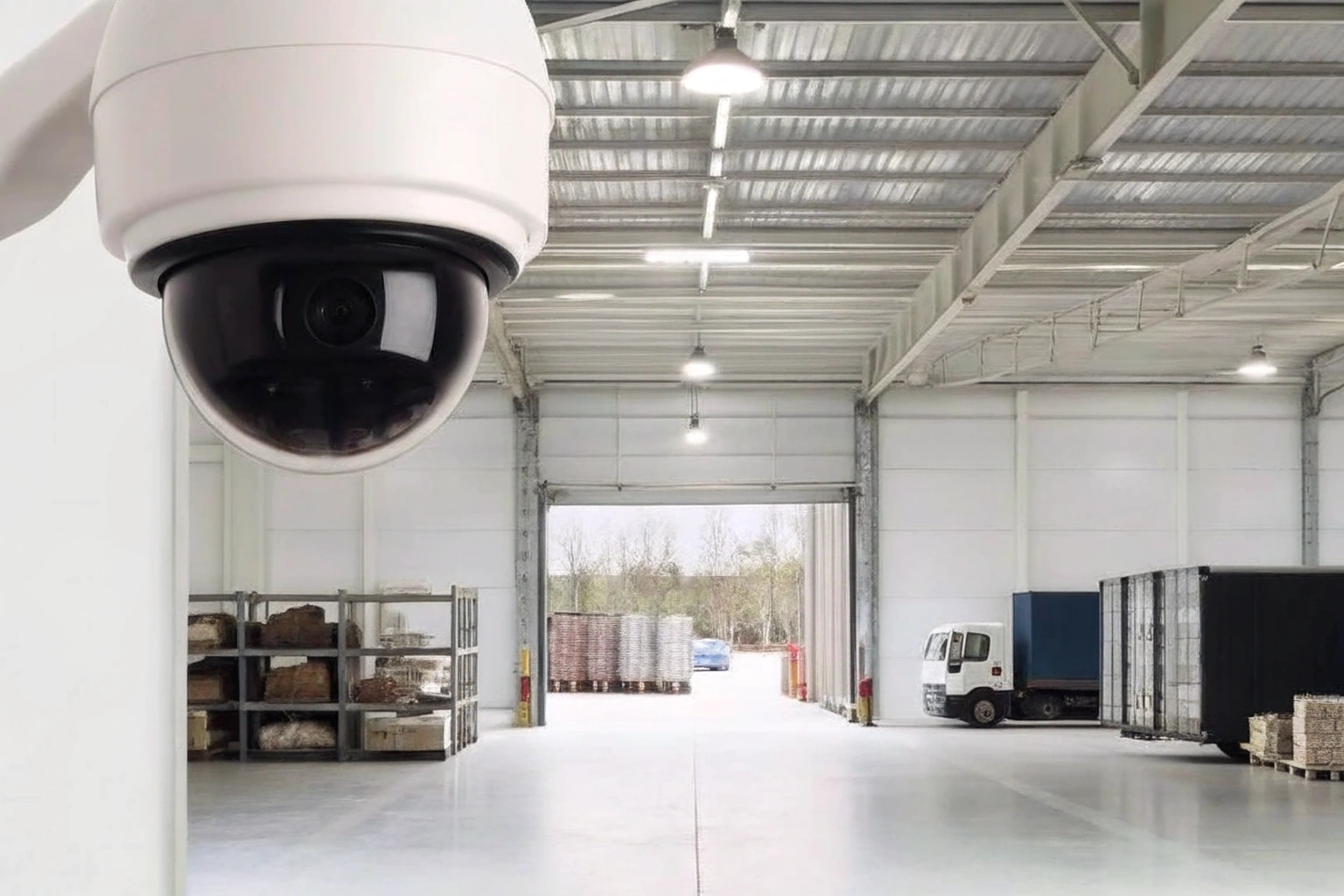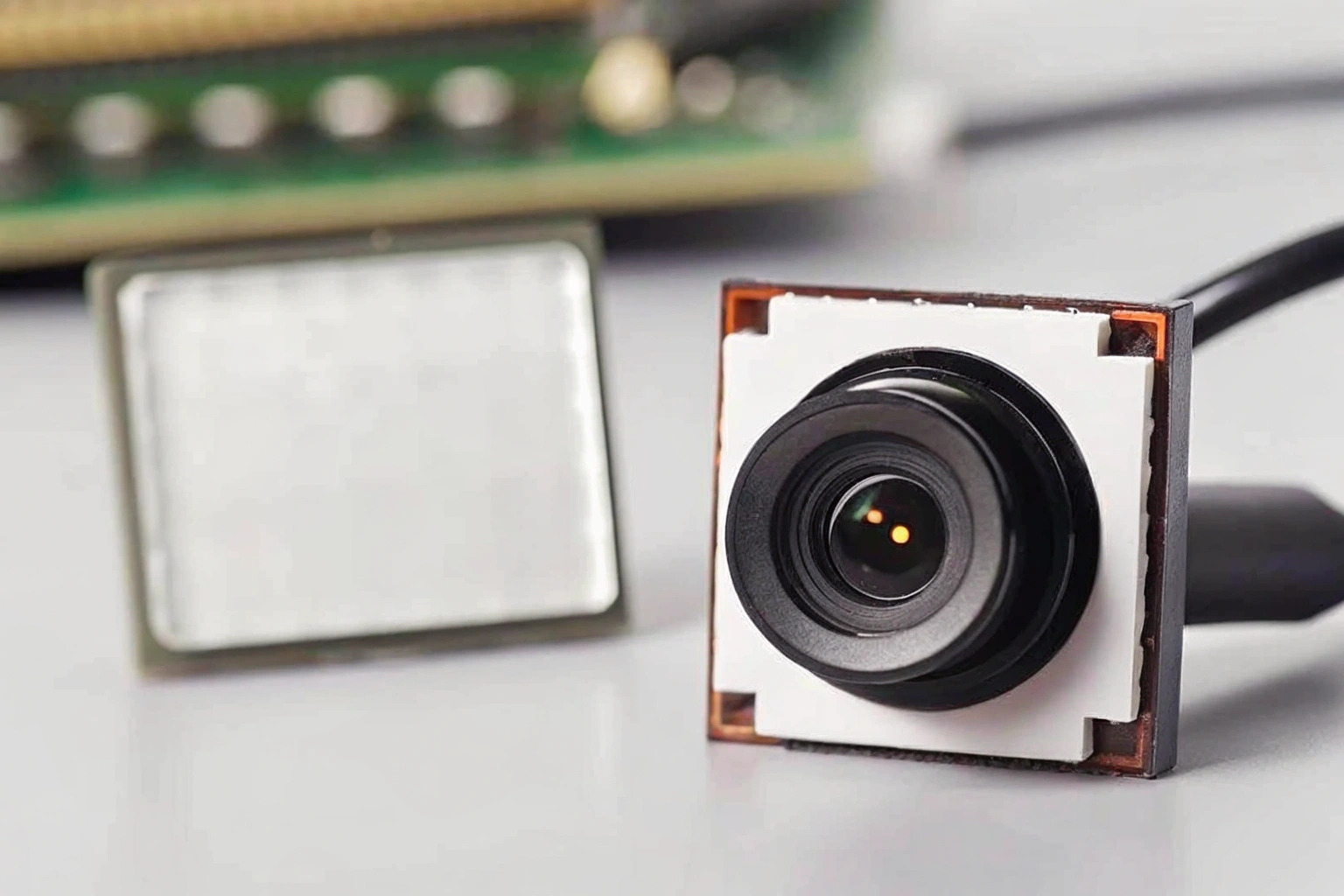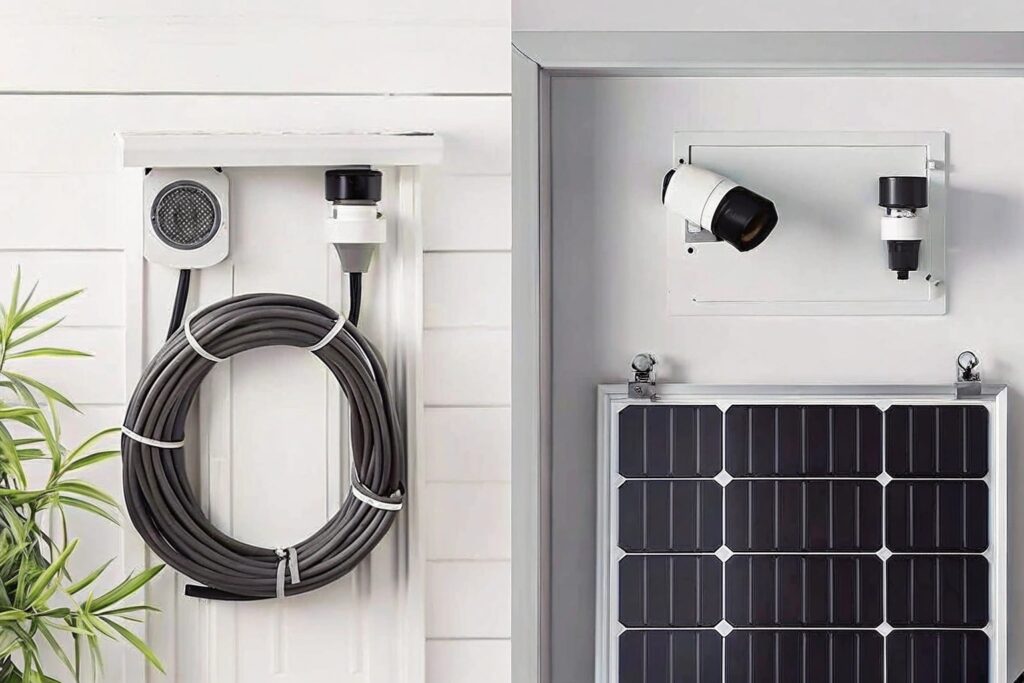Struggling with the high costs and inflexibility of traditional CCTV wiring? You need security everywhere, but trenching cables across your property is expensive and disruptive, limiting your surveillance reach.
Wired cameras require physical cables for power and data, offering high stability. Solar cameras use sun-powered panels and batteries, providing incredible flexibility to be installed anywhere. This allows you to easily monitor remote locations without any existing electrical infrastructure, greatly expanding your security coverage.

Choosing between a wired or solar system is a big decision for any business owner. I’ve seen many clients struggle with this. It’s not just about how the camera gets power. It's about the total cost over several years, where you can place your cameras, and how reliable your system will be during a power outage. A solution that looks cheap upfront can become very expensive later. You must consider your property's unique layout and your specific security goals. We need to look deeper than just the power source to find the right solution for your business. So lets look at the details that really matter.
What are the disadvantages of wired cameras?
You probably think that a wired camera is the most secure and reliable option. But the installation costs, inflexibility, and vulnerability to power outages can create huge hidden problems and expenses.
The main disadvantages of wired cameras are the high installation costs from cabling and labor. They are also completely inflexible once installed. Plus, they are vulnerable to deliberate wire cutting or power grid failures, creating major security gaps unless you have a dedicated backup power system.

When we talk to business owners, the topic of wired systems always comes back to three main issues. I was recently speaking with a potential client in France, Daniel, who runs a logistics company. He was shocked when he received a quote for wiring his new parking lot. The cost of just the installation was more than the cameras themselves. This is a common story.
Installation Costs
The biggest surprise for most people is the labor cost. You need to hire professionals to run cables through walls, ceilings, and sometimes even underground. Trenching a cable across a parking lot or a field is expensive and disruptive to your business operations. This initial investment can be very high.
| Cost Factor | Wired System | Details |
|---|---|---|
| Material Cost | Moderate to High | Includes cameras, long cables, connectors, and DVR/NVR. |
| Labor Cost | Very High | Requires professional installation, drilling, and trenching. |
| Flexibility | Very Low | Moving a camera requires new wiring and more labor costs. |
Location Limitations
With a wired system, your camera locations are limited to places where you can easily run a cable. This means remote corners of your property, perimeter fences, or detached buildings might be left unprotected. You are tied to your building's existing power grid. For a business with a large outdoor area, this is a significant security compromise.
Single Point of Failure
A wired camera system is completely dependent on the main power supply. If there is a power outage in your area, your entire security system goes down unless you have invested in an expensive uninterruptible power supply (UPS) or generator. Also, a clever thief can simply cut the power or data cable to disable a camera, leaving you completely blind. This is a risk that many businesses cannot afford to take.
Which CCTV is best for business?
Choosing the "best" CCTV system for your business can feel like an impossible task. If you make the wrong choice, you could waste money, have poor coverage, and leave your property vulnerable.
There is no single "best" CCTV for all businesses. The ideal choice depends on your specific needs. A hybrid system, which combines reliable wired cameras for critical indoor spots and flexible solar cameras for outdoor or remote areas, often provides the most complete and cost-effective solution.

The smartest approach I recommend to my clients, from distributors in Poland to retailers here in Italy, is to not think in terms of "either/or". Instead, think about creating a complete system tailored to your property. We have a warehouse here in Italy, so we can quickly supply both types of cameras to our European partners, which makes building a hybrid system very easy.
Assessing Your Property
First, walk around your business. Where do you absolutely need 100% stable footage, like at cash registers or main entrances? These are great spots for wired cameras. Now, look outside. What about the far end of the parking lot, the delivery gate, or along a back fence? These are perfect locations for solar-powered cameras, where running a wire would be a nightmare.
Identifying Critical Zones
Based on your assessment, you can create a security map. This helps you decide which type of camera goes where. The goal is to cover all your critical zones without spending a fortune on unnecessary wiring.
| Location | Recommended Camera Type | Reason |
|---|---|---|
| Office / Indoor Sales Floor | Wired | Stable connection, close to power and network. |
| Main Entrance | Wired | Most critical area, demands highest reliability. |
| Parking Lot / Perimeter | Solar | High flexibility, avoids expensive trenching. |
| Remote Gate / Storage Area | Solar | Only practical option for off-grid locations. |
Future-Proofing Your Investment
A hybrid system is also great for the future. As your business grows, you might need to add a camera to a new storage shed or a temporary construction site. With a solar-ready strategy, you can add a new camera in just a few hours without calling an electrician. This flexibility ensures your security system can easily grow with your business.
What is the best solar security camera system?
You might want to use solar security cameras, but you worry about their performance. Will they work on cloudy days? Will the battery die at the worst possible moment?
The best solar camera system has a large battery, an efficient solar panel, and strong weatherproofing. Critically, it should have smart power-saving tech, like AoV (Always-on-Video), to extend battery life and ensure true 24/7 operation is possible, even in low-light conditions.

This is a valid concern. Many cheaper solar cameras on the market fail when you need them most. But technology has improved dramatically. At our company, we are focused on solving this exact problem, especially for our niche products like mini and hidden cameras where power consumption is the main challenge. The solution is not just a bigger battery, but smarter technology.
The Power of AoV Technology
We are developing a new line of cameras with AoV, or Always-on-Video, technology. This is a game-changer for solar power. Here is how it works: when there is no activity, the camera drops to a very low power mode, recording at just one frame per second. The moment it detects motion, it instantly wakes up and records at a full, smooth frame rate. This simple change can increase the battery life of a small, solar-powered spy camera by 70% to 90%. It means our cameras can offer 24/7 readiness, even after several cloudy days.
Key Components to Check
When you are sourcing a solar security camera for your e-commerce store, ask the supplier about the battery capacity (measured in mAh), the solar panel wattage, and whether it has intelligent power management like AoV. A good system will balance these three components perfectly to ensure reliability. And of course, the camera itself must have the high-quality resolution and features you need. Our self-developed S820 model, for example, is built around this principle of high efficiency and reliability.
Why Certification Matters
For my clients in the EU, like Piotr in Poland or Sossa in Italy, this part is non-negotiable. A professional solar security system must have verifiable CE and RoHS certifications. This proves the product is safe, reliable, and legal to sell in the European market. As a manufacturer, we make sure all our products, especially our innovative solar and AoV models, meet these strict standards. This is a promise of quality and a key part of the trust we build with our long-term partners.
Conclusion
Your security solution should be as dynamic as your business. By combining wired reliability with solar flexibility and new AoV tech, you create a powerful, future-proof surveillance system.


